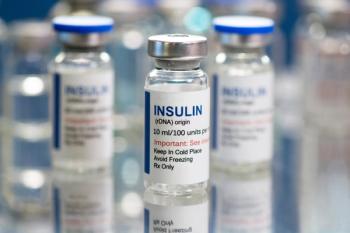
Transcatheter Aortic Valve Replacement as Effective as Open-Heart Surgery
A self-expanding transcatheter aortic valve replacement (TAVR) procedure was just as effective as surgery in intermediate risk patients.
Self-expanding transcatheter aortic valve replacement (TAVR) is as effective as open-heart surgery in intermediate-risk patients with severe aortic stenosis, a study suggests.
The findings, presented at the American College of Cardiology’s 66th Annual Scientific Session in Washington, DC, indicate that TAVR is at least as safe and efficacious as surgery in this patient population.
The SURTAVI trial is the second randomized, controlled trial to compare TAVR with surgical aortic valve replacement (SAVR) in intermediate-risk surgical patients. Furthermore, it is the first to examine outcomes using the expanding CoreValve and Evolut-R bioprosthesis valves.
Included in the SURTAVI trial were 1746 patients, with an average age of nearly 80 years, at 87 centers in the United States, Europe, and Canada. Eligibility criteria were that patients had to have symptomatic, severe aortic stenosis defined by standard parameters; were considered an intermediate risk for open-heart surgery based on a combination of the Society of Thoracic Surgeons (STS) predicted risk operative of mortality (PROM) score; and a series of frailty, disability, and other measures that led to an estimated mortality of 3% to 15%.
STS PROM scores were 4.4±1.5 in the TAVR group and 4.5±1.6 in the SAVR group. No major differences were observed in key characteristics such as age, gender, frailty, disability, and other conditions.
For the study, patients were randomized to receive TAVR or SAVR. Surgeons performing SAVR could choose any biologic valve or whether to enlarge the annulus or base of the valve if needed, so TAVR could be evaluated against real-world surgery.
At the start of the trial the original CoreValve was used in the TAVR arm (84%). However, the new Evolut-R system was introduced towards the end of the trial in the US centers only, and was implanted in 16% of enrolled patients
Patients had clinical visits, echocardiograms, electrocardiograms, and/or quality of life assessments at 1, 3, 6, 12, and 24 months.
The results of the study showed that death from any cause at 30 days, 1 year, and 2 years were similar for TAVR and SAVR: 2.2% vs 1.7% of patients at 30 days, respectively; 6.7% vs 6.8% at 1 year, respectively; and 11.4% vs 11.6% at 2 years.
No statistically significant differences in the rate of major disabling stroke were observed at 2 years (4.5% SAVR and 2.6% TAVR). The investigators noted that the risk of any type of stoke at 30 days was statistically superior for TAVR at 3.4% compared with SAVR at 5.6%.
Unlike the earlier PARTNER trial, which stratified patients by how the surgeon routed the catheter, SURTAVI stratified patients by need for revascularization, according to the investigators. Data showed no difference in outcomes based on whether a patient needed the procedure to open blocked arteries.
The study also showed more moderate-to-severe paravalvular leakage in the TAVR versus surgical valves, which occurred in 5.4% of patient versus 0.4%, respectively. Additionally, this group had a higher use of pacemakers. The surgery arm had more transfusions, strokes, acute kidney injury, and atrial fibrillation at 30 days.
After performing quality of life assessments at baseline, 1 month, 6 months, and annually thereafter, the investigators found that patients who received TAVR reported significantly better quality of life 1 month after the procedure, but by 6 months, the 2 groups were similar. In both groups, patients reported markedly better quality of life after receiving a new aortic valve compared with before either of the interventions.
The authors noted that a potential limitation of the study is the higher dropout rate of 8.2% for patients randomized to receive surgery, which has been a consistent trend observed across other studies. Furthermore, a longer follow-up is needed to gain more complete information on the life cycle of the device and how it works, especially because only 16% of patients received the newer EVOLUT-R system.
Patients in the SURTAVI trial will be followed for a total of 5 years.
“TAVR was just as good a surgery, but it was not statistically superior to it,” said lead author Michael J. Reardon, MD. He also noted that because mortality in the surgical group was so low, it was difficult to meet superiority.
The investigators are currently enrolling patients in an ongoing randomized controlled study to evaluate TAVR in low-risk patients. Although not all patients would be candidates for TAVR, low-risk patients comprise an estimated 80% of patients with aortic stenosis; intermediate- and high-risk patients comprise 12% and 8%, respectively.
“We found exceeding low mortality at 1 and 2 years, which should give us great confidence as we move into lower risk that these outcomes are very good,” Reardon said.
Newsletter
Stay informed on drug updates, treatment guidelines, and pharmacy practice trends—subscribe to Pharmacy Times for weekly clinical insights.







































































































































































































